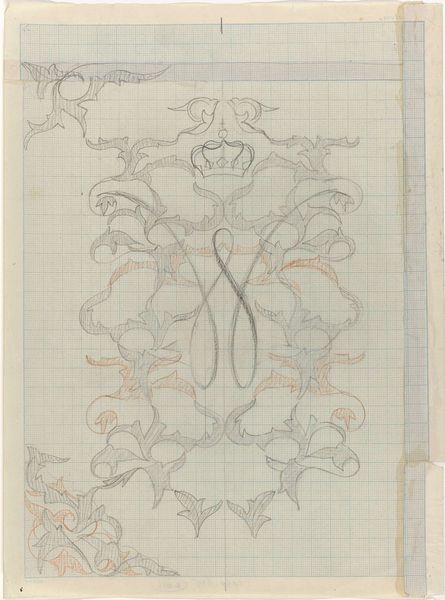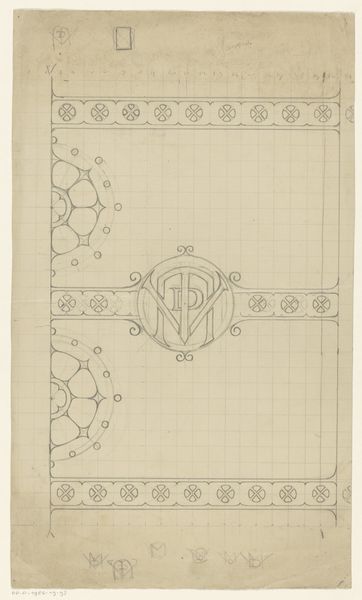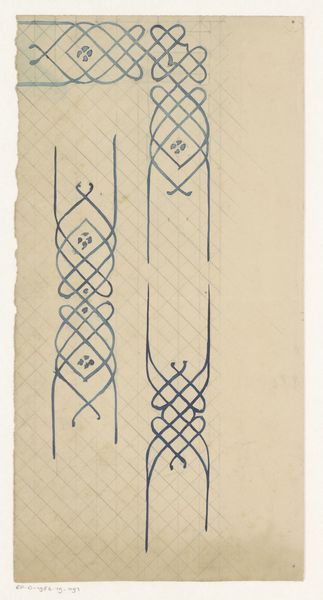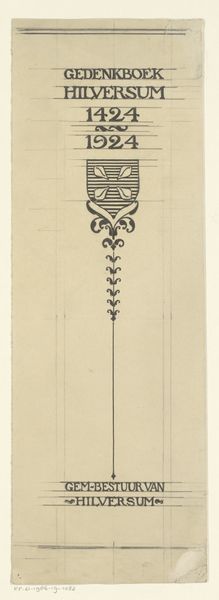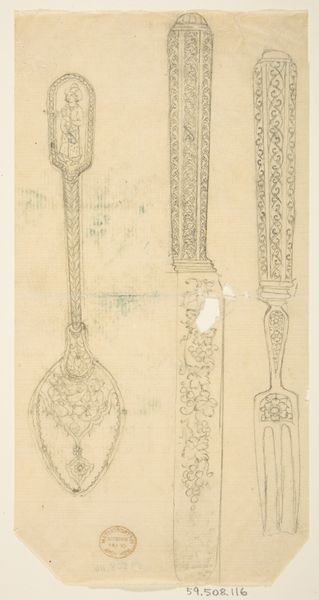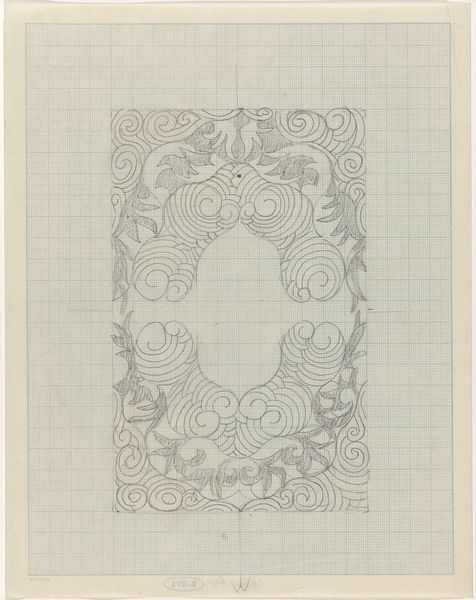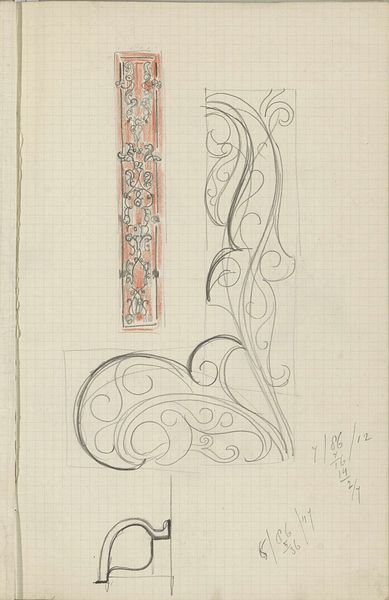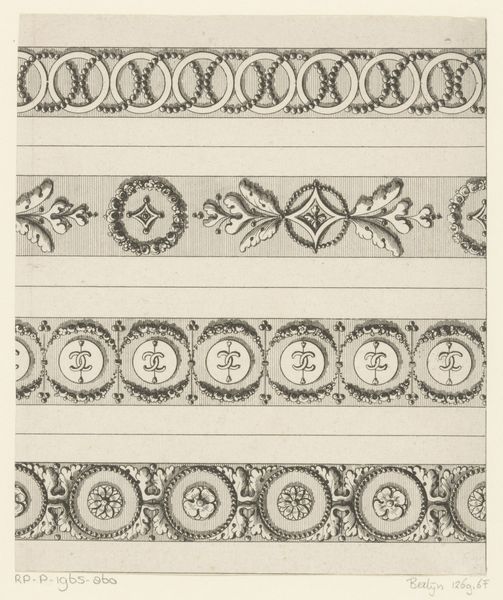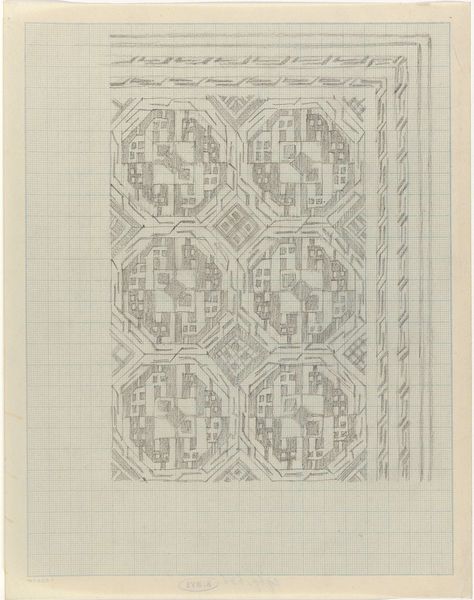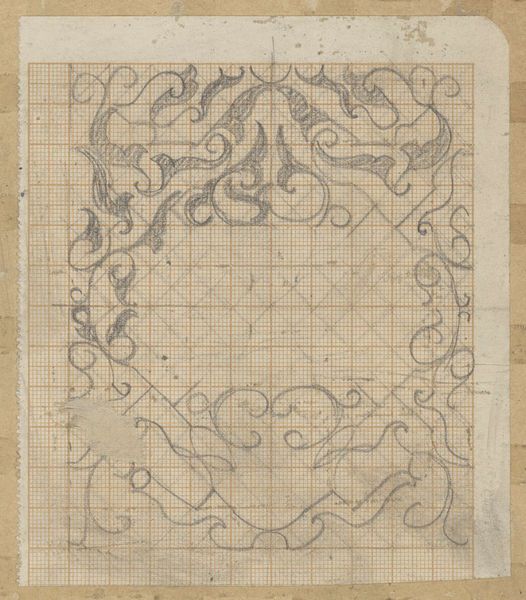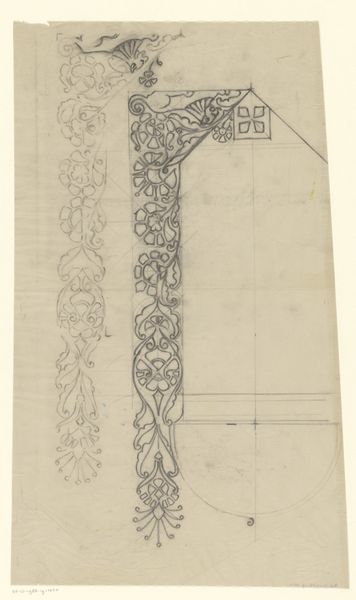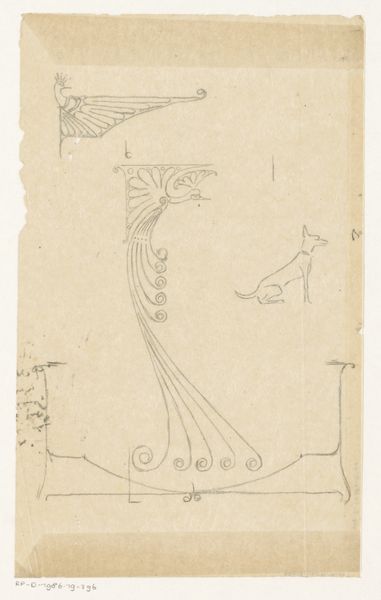
drawing, paper, pencil
#
drawing
#
aged paper
#
toned paper
#
light pencil work
#
art-nouveau
#
ink paper printed
#
old engraving style
#
hand drawn type
#
paper
#
personal sketchbook
#
geometric
#
pencil
#
ink colored
#
line
#
sketchbook drawing
#
decorative-art
#
sketchbook art
Dimensions: height 182 mm, width 88 mm
Copyright: Rijks Museum: Open Domain
Editor: This is "Ornamenten met krullende vormen," or "Ornament with Curled Shapes" by Reinier Willem Petrus de Vries, created sometime between 1884 and 1952. It’s a pencil drawing on paper. I’m immediately drawn to the Art Nouveau style and how the drawing looks like it was planned out with the grid. What connections do you see? Curator: The grid is key. Think about the social context. During the late 19th and early 20th centuries, you see an increase in industrialization, impacting social hierarchies. Art Nouveau sought to democratize beauty, to bring aesthetically pleasing design to functional objects for everyone, not just the elite. The grid implies a system, a controlled distribution of beauty. Editor: So the ornament, though beautiful, is conceived within a controlled system. Almost like mass production? Curator: Precisely. The flowing, organic forms of the ornamentation are then almost in tension with the rigidity of the grid. What does that juxtaposition suggest about the artist's, and perhaps society's, relationship with nature versus industry during this era? How might this connect with feminist theories of nature being gendered feminine, and industry being gendered masculine? Editor: That is a fascinating way to think about it! It almost feels like the organic is being organized. Curator: Right, the inherent tension speaks volumes about power dynamics during that period and even today. It makes me wonder how design impacts our perception of nature and how deeply ingrained social biases are within the objects we interact with daily. Editor: I’ve definitely gained a new perspective on how socio-historical elements can impact design! Thanks for illuminating the period.
Comments
No comments
Be the first to comment and join the conversation on the ultimate creative platform.
